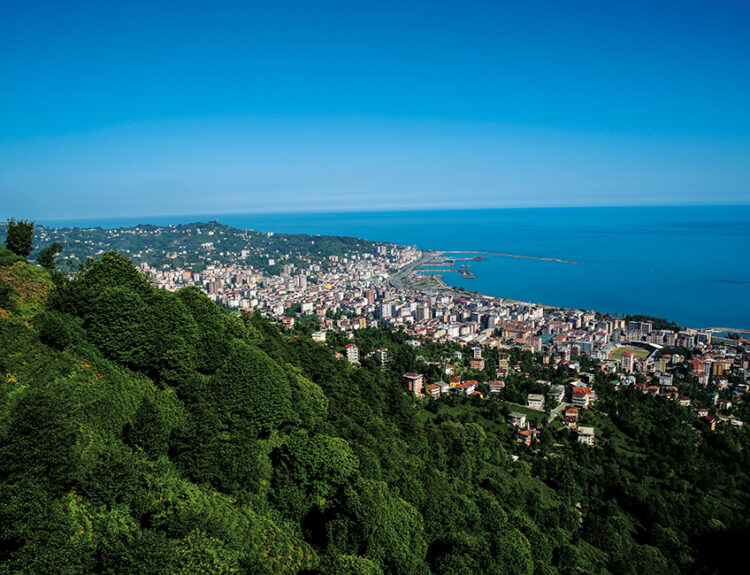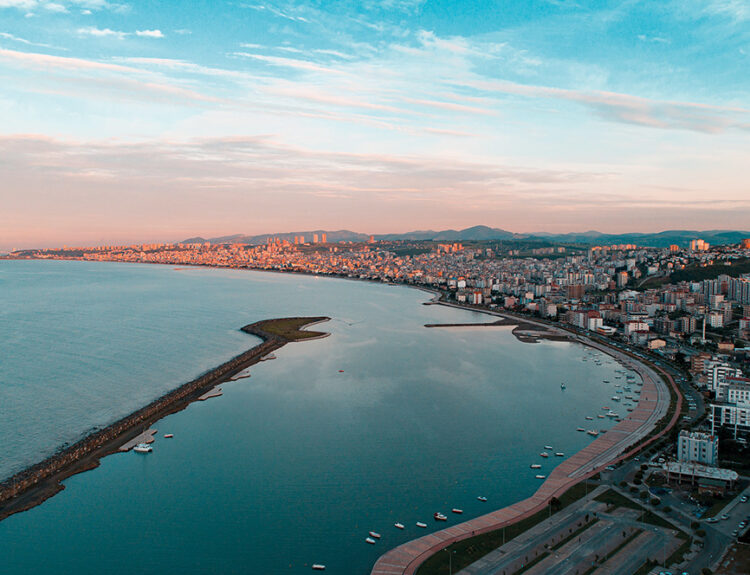Mardin, a mosaic of civilizations, is one of the richest meeting points of many languages, religions, and cultures not only in Türkiye but also in the world. The city, which has allowed different cultures to live together in peace for centuries, has the potential to become a museum city in Southeastern Anatolia with its history, architectural structure, and traditional life.
Mardin, which has hosted many cultures and civilizations to date and still has an environment of tolerance and trust that can be set as an example to the world with its multicultural lifestyle, is one of the important cities of the Southeast, giving the impression that time has stopped with its architectural, ethnographic, archaeological, historical and visual values. The city, at the foot of a mountain covered with limestone and lava, rising in the middle of the fertile Mesopotamian plain, was founded on the slopes of the hill in the south of the Mardin plateau, overlooking the Kızıltepe plain. The beginning of the city, which dominates the extensive and fertile Kızıltepe plain with its location, dates back to 3000 BC.
Mardin, hosting civilizations such as the Babylonians, Assyrians, Hittites, Urartians, Persians, Seljuks, Umayyads, Abbasids, Anatolian Seljuks, Artukids, and the Ottoman Empire, stands as one of the oldest settlements in the Southeastern Anatolia Region. It possesses a vibrant cultural structure and historical remnants, being almost the birthplace and dissemination center of Assyrian religion.
A fascinating city landscape
The city, also known as the capital of stone, was built in the Middle Ages on steep cliffs, first inside the Mardin Castle, and later on a steep slope in the south, in a linear settlement pattern in the east-west direction. The city is said to be a “spectacle by day and a pendant by night” because of the traditional Mardin houses in the Old Mardin region, which are built from yellow limestone in the form of steps at the foot of Mardin Castle and stand as if on top of each other. Because the stone houses, which can be viewed from the castle during the day, resemble a pendant at night with the effect of the illumination of the city.
Included in UNESCO’s World Cultural Heritage List
Mardin, which hosts different religious beliefs, also contains mosques, mausoleums, churches, monasteries, and many similar religious works of historical artistic value. In addition, Mardin is one of the rare cities that has preserved important examples of civil architecture worth preserving with its unique architecture and original urban texture. This city, with its carefully crafted stone houses, gives people the feeling of living in a different time period. That’s why the Late Antique and Medieval Churches and Monasteries located in the “Tur Abdin” region of Mardin were included in the UNESCO World Heritage Tentative List. Mor Sobo Church, Virgin Mary Church (Yoldath Aloho), Deyrulzafaran Monastery, Mor Gabriel Monastery, Mor Abai Monastery, Mor Loozor Monastery, Mor Jacob Monastery, Mor Quryaqos Church, and Mor Azozo Church are the churches and monasteries on the list.
Center of Assyrian Orthodox Church for 7 centuries
According to historical sources, every nation in these lands spoke their own language and could easily worship their own religion and sect without being subjected to any intervention. In fact, Mardin and its region have great importance in history as the place where the first madrasas of Anatolia were built. Mardin seamlessly preserves its structure by embracing both ethnic and religious diversity, allowing every identity to flourish and express itself, much like it has done in the past. This is also seen in the fact that the dominance of Muslims in this region has never prevented the Assyrians, who describe themselves as the first tribe to accept Christianity and who still stand out with their devotion to their church, from continuing their existence. Thus, Mardin continued to function as the center of Assyrian Orthodox Church for a period of 7 centuries.
Mardin Castle is the summit
Located at the top of Old Mardin, Mardin Castle is one of the most popular places. When you go up to the castle, which is one of the oldest buildings in the city and has hosted dozens of civilizations, the whole city lies under your feet. Mardin Castle, also known as the Eagle’s Nest, is an important castle used by many civilizations. Other castles you can see in Mardin are Anzavur Castle, Marin Merdis Castle, Fafih Castle and Rabbat Castle.
Kasımiye Madrasa with its pool symbolizing life
Kasımiye Madrasa takes its place among the historical buildings of the city with its history of more than 700 years. The courtyard with the pool attracts the most attention here. This pool has a special meaning because it symbolizes life. The first pool where water flows symbolizes infancy, the second pool symbolizes childhood, the third long, thin pool symbolizes youth, the fourth short pool symbolizes old age, and the pool into which water flows symbolizes the Day of Judgment. Another madrasa that is impressive in terms of architecture and visited by many tourists in the center of the city is Zinciriye Madrasa. The stone engravings at the entrance of the madrasa, which was built in 1385, are among the details that will attract your attention. This madrasa, where education is still provided, has a wonderful view as it is located in the upper parts of Mardin, just below the castle. Our recommendation to you is to take a photo in front of its magnificent gate…
Kırklar Church, standing tall since the mid-6th century to the present day
Mar (Saint) Behnam Church, the most visited church in Mardin, belongs to the Assyrian Orthodox community. The church, also known as the Kırklar Church among the public, is a mid-6th century structure built in 569 in the name of Mor Behnam and his sister Saro. The ceiling section of the church, where the spiritual and administrative affairs of the people were managed after Mardin became the Assyrian Ancient Patriarchate Center in 1293, is supported by arches placed on 12 massive columns in the east-west direction and is built with smooth cut stones.
Deyrulzafaran Monastery built on the Sun temple
Another must-see place in Mardin is Deyrulzafaran Monastery, a symbol of brotherhood of religions. Deyrulzafaran, 5 kilometers east of the city of Mardin, is located at the junction of the Kızıltepe plain and the Mardin plateau. The name of the monastery, built by the Assyrians in 4000 BC on a small hill, comes from the saffron flowers used in its construction and the yellowish color of its stone. According to a rumor, the bones of 12 thousand saints are found here. For this reason, it is also known as the Twelve Thousand Saints Monastery. The domes, arched columns, wooden hand embroideries, and stone embroideries in the interior and exterior of the world-famous monastery, which is also considered the place of pilgrimage for the Assyrians, are quite interesting. The monastery, which was built on a complex that was used as the Temple of the Sun before Christ and later as a castle by the Romans, is today one of the most important religious centers of both Assyrians living in the diaspora and Assyrians living in the Middle East and India. Deyrulzafaran Monastery, which contains the graves of 52 Assyrian patriarchs, is visited by Assyrians scattered all over the world to receive prayers and blessings.
Mor Gabriel was the most famous monastery of the east in the Middle Ages
Mor Gabriel Monastery, the second important monastery of Mardin, is one of the oldest Christian monasteries in the world, having been founded in 397 by Mor Samuel and Mor Şemun. The monastery, which is said to be the most famous monastery in the entire east in the Middle Ages and where 300 monks lived in it during its golden age, has undertaken important roles in history in the shaping and development of Assyrian culture and religious structure. Mor Gabriel Monastery, one of the places you must see in Mardin, will definitely impress you with its lively terraces, domes, abbara, bell towers, gates, and mosaics.
Ephesus of Mesopotamia: Dara
Dara Ruins, 30 kilometers away from Nusaybin district, is a historical city area that should be seen by those who come to Mardin. The Ancient City of Dara, which shows how magnificent and rich its past is with its dungeons, palaces, cisterns, dams, aqueducts, bridges, churches, armories, theaters, bazaars, walls, and inner castle, is known as one of the most important cities of Ancient Mesopotamia. Dara, described as the place where civilization began, continues to mesmerize onlookers even with the parts that have been uncovered, although work on it is still ongoing. It is also known that the Dara dam, located in this mysterious settlement area and thought to have been built in the 6th century, is the oldest documented arch dam in the world.
You can buy souvenirs from the bazaars
One of the most enjoyable stops of your Mardin trip will be the Mardin bazaars. You can also buy gifts for your loved ones while wandering around the bazaars where you can see traditional handicrafts and have pleasant conversations with the city’s tradesmen. For this, you need to change your route to Mardin’s most visited Kayseriyye (Bezestan) and Revaklı (Tellallar) bazaars.
Tourism revives handicrafts
There are many traditional handicrafts in Mardin that are used in tourism or have significant potential for this purpose. The most important of these are filigree, stone processing, coppersmithing, wood carving, saddle making, herbal soap making and home winemaking. While coppersmithing has been going on for centuries in its own special bazaar, the filigree art, which is mostly done in Midyat, is gradually revived with tourism. While stonemasonry is on the verge of extinction, it continues to exist today thanks to the increase in restorations.
Unique tastes you won’t find anywhere else
There are many types of food in Mardin that are unknown in other places in Türkiye. Kibbe, a type of stuffed tripe, is one of the most satisfying delicacies, consisting of tripe meat, rice, mint, allspice and optionally chickpeas. Mardin stuffed meatballs, which is among the things that must be given a taste in Mardin, fascinate with their taste. In addition, sembusek, bacanak soup, katıklı stuffing, plum stew, cheese halva, lentil meatballs called belloğ, and babağannuç are considered to be the most important local dishes. It is quite possible to find a soup that suits your taste among various soups in Mardin. These soups include lebeniye, flour soup, lentil soup, kelle paça, chickpea soup, çörten, ginedir soup and tomato soup. On the other hand, bitter coffee called mırra is an important beverage in Mardin province, as it is in other provinces of the region.




